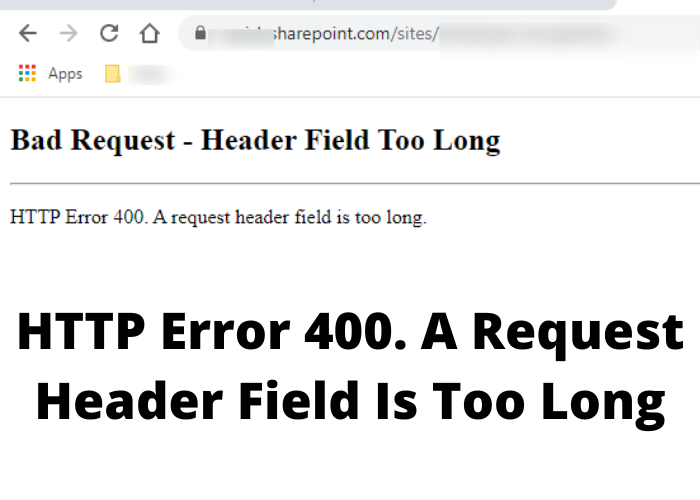We’ve all been there. You’re working on a project, and you need to access a website to get some information. But instead of getting the information you need, you get an error message telling you that “The requested URL was not found on this server.” And when you check the status code, you see that it’s http error 400 – a request header field is too long. So what do you do? Well, I’m here to tell you that there is hope. In this blog post, I’m going to explain what http error 400 means, and I’ll give you some tips on how to fix it. Stay tuned!
What Is an HTTP Error 400 and What Does It Mean for Your Website or Blog?
HTTP error 400 is one of the many possible HTTP status codes that can appear when attempting to access a website or blog. This particular error means that the request from the user’s browser could not be understood by the server. This can happen for a number of reasons, including bad syntax in the request, incomplete or missing information in the request, or an invalid URL. In some cases, HTTP error 400 may also indicate that the user’s IP address has been blocked by the server. Regardless of the cause, HTTP error 400 can be a frustrating experience for users. Fortunately, there are a few things that website and blog owners can do to fix this problem. First, check the syntax of the request and make sure that all required information is included. If the problem persists, try clearing the browser’s cache and cookies. If all else fails, contact the website or blog owner and ask them to look into the issue. HTTP error 400 may be an annoyance, but with a little effort it can be fixed.
How Can You Fix the Problem and Get Your Website Back Up and Running Again?
HTTP error code 400 is usually caused by a client-side issue. This means that the problem is most likely on your end, and not on the server. There are a few things you can do to try and fix the problem. First, check the URL you are trying to access. If it is incorrect, or if there has been a typo, then the server will return a 400 error. Make sure that you are using the correct URL, and that all spelling is correct. If the URL is correct, then the next step is to clear your browser’s cache and cookies. Sometimes, old data can cause problems when trying to access a website. Clearing your cache will force your browser to fetch fresh data from the server. Finally, if neither of these solutions works, then you may need to contact the website’s owner or administrator to resolve the issue. HTTP error 400 can be frustrating, but with a little troubleshooting, it can usually be fixed.
What Are Some of the Most Common Causes of HTTP Error 400 Messages on Websites?
HTTP error 400 messages are one of the most common types of errors that can occur on a website. There are a number of reasons why this error may occur, but the most common cause is that the website’s server is unable to understand the request that has been made by the user. This can be due to a number of factors, such as an incorrect URL being entered into the address bar, or a browser extension that is blocking the request. In some cases, HTTP error 400 messages can also be caused by an issue with the website’s server itself. If you are seeing HTTP error 400 messages on a website, it is important to try to identify the cause so that it can be fixed.
Is There Anything You Can Do To Prevent This Type of Error From Happening in the Future?
HTTP error 400, also known as “bad request,” is one of the most common errors that can occur when accessing a website. There are a few different things that can cause this error, but the most common is a problem with the URL that was entered. In some cases, HTTP error 400 can also be caused by a conflict between the website and the browser being used. Thankfully, there are a few simple steps that can be taken to prevent HTTP error 400 from occurring in the future. First, make sure that the URL is entered correctly. If possible, try accessing the site using a different browser. If HTTP error 400 persists, contact the website’s administrator for help. By taking these simple steps, you can ensure that you’ll be able to access your favorite websites without any problems.
Are There Any Other Types of Errors That Might Occur on Your Website, and How Can You Fix Them if They Do Happen?
HTTP error 400, also known as a “Bad Request” error, indicates that the server was unable to understand the request made by your website. This is usually due to a malformed URL or an incorrect HTTP method (such as GET instead of POST). To fix this error, check your website’s URL and make sure that it is correctly formatted. If you are using an HTTP method other than GET, make sure that you are using the correct HTTP method for the particular URL. If you are still having trouble, contact your web hosting provider or a qualified developer for assistance.

